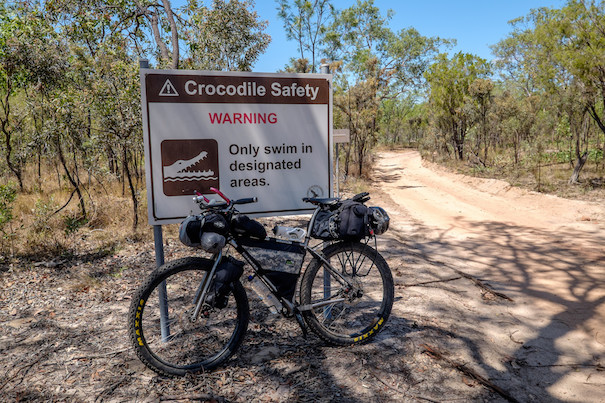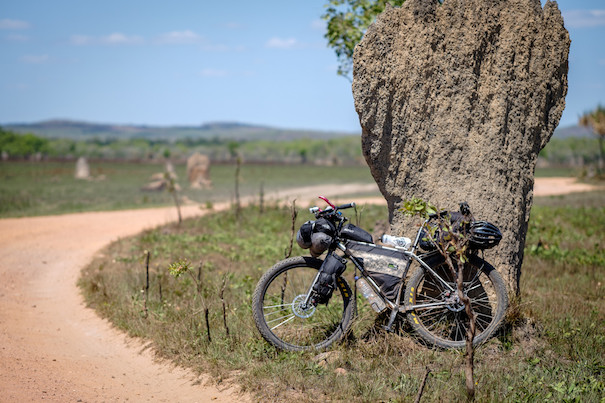Sponsored Listings:
By Matthew Crompton
There are a hundred different ways to do it, from quick overnighters on local backroads to way-out multi-month expeditions crossing whole continents. You can ride a zippy titanium cyclocross bike or a monster-truck-tyred fat bike; you can ride a brand-new full-suspension mountain bike or the old steel clunker that you have in the garage.
Matthew Crompton
There are three main elements to bikepacking:
1. Camping is half the point!
Get away from cities and screens for a night and sleep outside. Ride for a day, eat dinner around a campfire, snuggle into your sleeping bag and wake up the next day somewhere beautiful, then pack up your gear and continue on riding. It’s usually best to start out with a simple sub-24-hour out-and-back ride near where you live, in order to get comfortable with your camping setup and riding a loaded bicycle.
2. Get off the pavement, away from traffic, and out into nature. That could mean dirt roads through local farmland, a network of firetrails through a state forest, or even gnarly technical riding on MTB trails in a national park. Google Maps satellite imagery is a great place to start in your search for a fun off-pavement route, but also check out the webpages of local mountain biking groups for a network of trails that you can piece together, or the growing collection of routes in the US and worldwide available on bikepacking.com for inspiration.
3. Your bike should be set up to make riding on dirt fun, rather than a slog. That means running wider, higher-volume tyres, having low enough gears, and – most importantly – travelling light. Traditional panniers tend to shake off on the rough stuff, and loading your bike up with 40kg of luggage will make it handle like an elephant, in addition to putting your wheels in serious danger of breaking on a bumpy road.

Matthew Crompton
Bikepacking gear
The popularity of bikepacking has grown exponentially over the last several years, and an ever-increasing number of manufacturers now offer a range of lightweight, minimal bikepacking bags to let you attach your gear to the bike in a streamlined and trail-friendly way.
You don’t need to spend heaps on new gear to start out bikepacking, though. The best bike to start out with is the bike you have. A cheap tent and sleeping bag are just fine for a summer overnighter, and while a custom framebag or seatpack are great to have, simply strapping your gear beneath your handlebars or to a rear rack works just fine too.
The important thing is just to get out there. The sense of adventure and freedom you’ll experience while out bikepacking, whether exploring a winding route through the backcountry, picking out the perfect campsite for the night, or just seeing what’s around the next bend (or twenty), will more than speak for itself.
Source: gogobot.com










